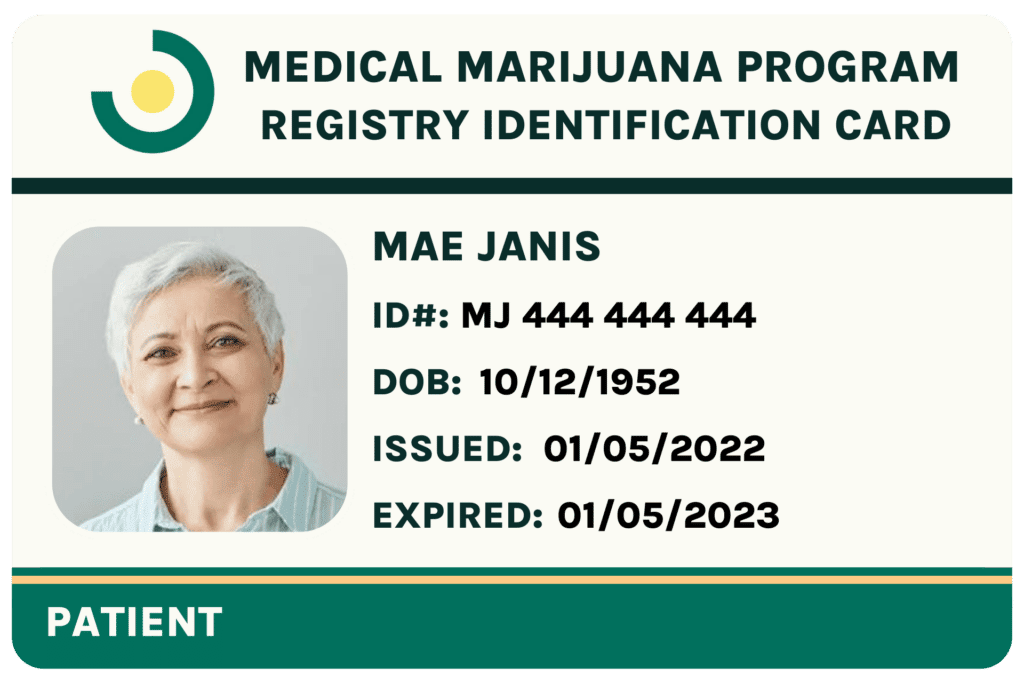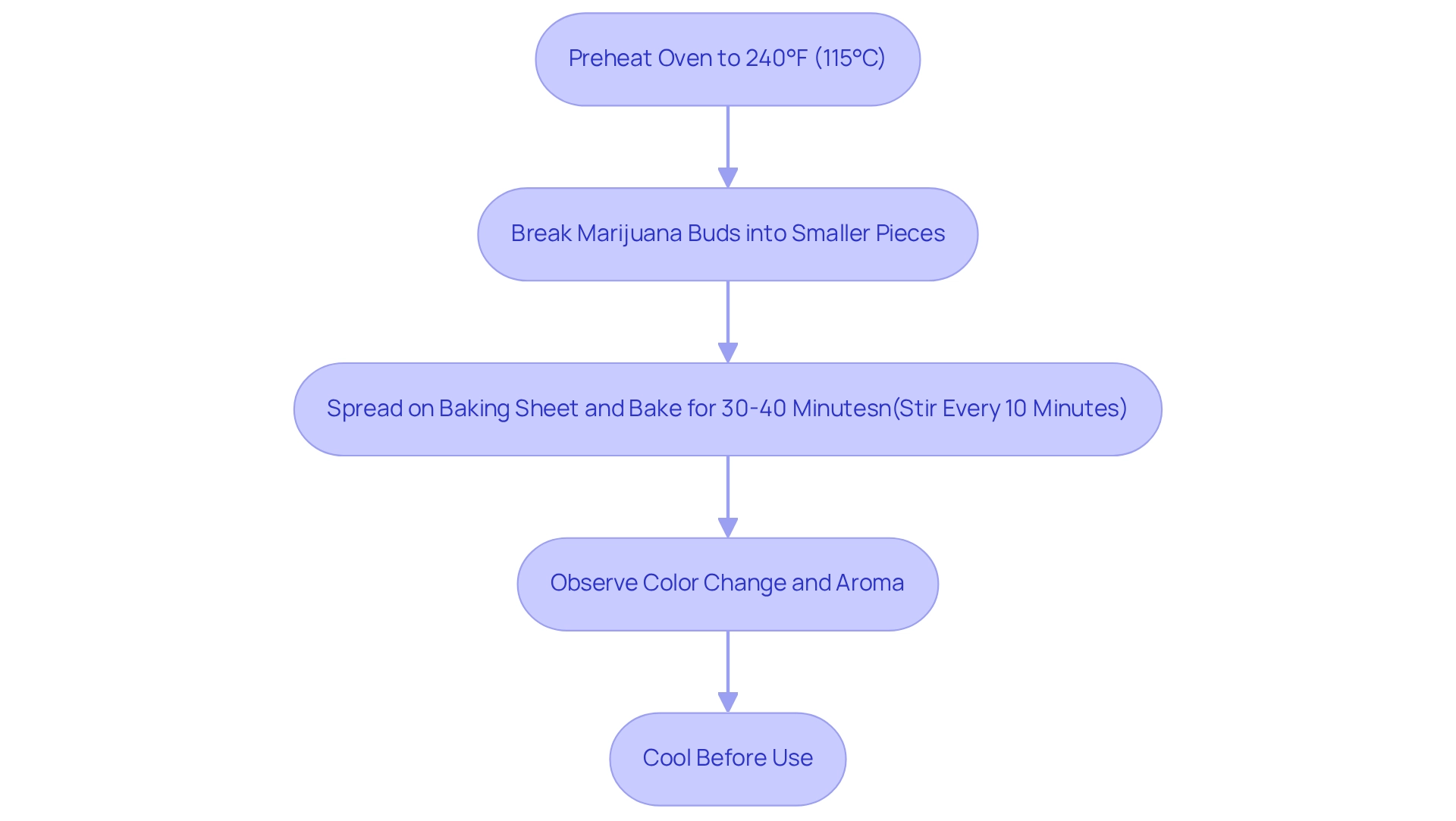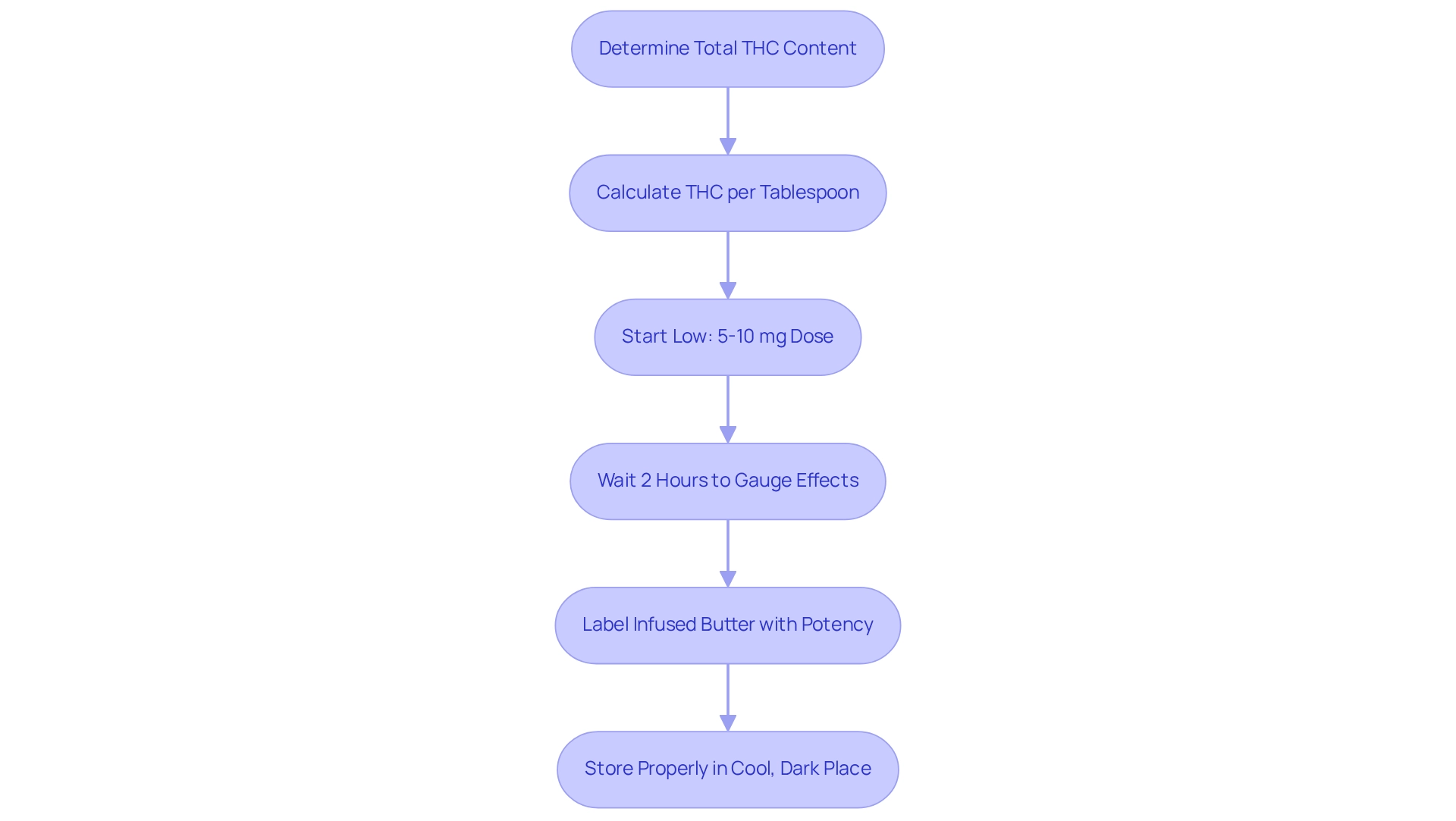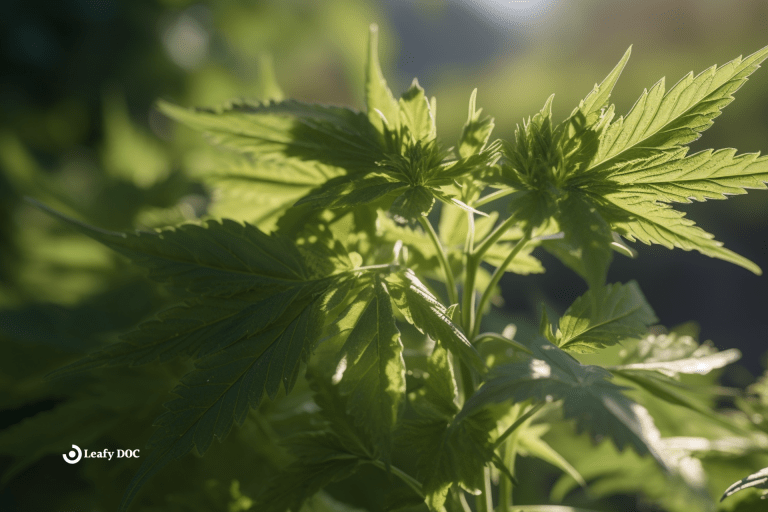How to Cook Weed: Step-by-Step Guide to Infusing Cannabutter
by Maya Green · May 9, 2025
Learn how to cook weed with our step-by-step guide to infusing cannabutter effectively.

Overview
This article serves as a compassionate guide, walking you through the process of cooking with cannabis by infusing cannabutter. It’s essential to understand the importance of decarboxylation, which activates the plant’s psychoactive properties, allowing you to truly enjoy the benefits of your culinary creations. You may find various methods for infusion helpful, along with safe dosing guidelines that ensure a positive experience.
As you explore creative culinary applications, remember that proper techniques can significantly enhance both the potency and flavor of your cannabis-infused dishes. It’s not just about cooking; it’s about creating delightful experiences that can uplift your spirit. If you’ve ever felt uncertain about how to incorporate cannabis into your cooking, rest assured that this guide is here to support you.
Take your time to experiment, and don’t hesitate to reach out for help if needed. Cooking with cannabis can be a rewarding journey, and with the right knowledge, you can create dishes that are both enjoyable and effective. Embrace this opportunity to expand your culinary skills and enjoy the process of infusing your meals with love and care.
Introduction
In the realm of culinary exploration, cannabis has emerged as a versatile ingredient, transforming traditional recipes into innovative creations. It’s important to remember that the process of decarboxylation is essential for unlocking the full potential of cannabis, allowing cooks to harness its psychoactive and therapeutic properties.
From crafting rich cannabutter to infusing oils, the methods of incorporating cannabis into cooking are as diverse as the flavors they enhance. This article delves into the art of cooking with cannabis, providing:
- Step-by-step guides
- Dosage guidelines
- An array of delicious recipes that showcase how to elevate everyday dishes with this unique ingredient.
Whether for medicinal purposes or culinary curiosity, you may find that understanding the nuances of cannabis cooking opens the door to a world of flavorful possibilities.
Decarb Your Cannabis: Activate the Potency
To enhance the potency of your marijuana, it’s important to start by preheating your oven to 240°F (115°C). Gently break your marijuana buds into smaller pieces and spread them evenly on a baking sheet lined with parchment paper. Bake for 30 to 40 minutes, stirring every 10 minutes to promote even heating. You’ll notice that the plant material develops a light brown hue and emits a fragrant aroma, indicating successful decarboxylation. Allow it to cool before incorporating it into your recipes.
Decarboxylation is crucial for maximizing the potency of your cannabis-infused dishes. This process transforms non-psychoactive THCA into THC, unlocking its euphoric effects, while also converting CBDA into CBD, known for its therapeutic properties. Without decarboxylation, cannabis-infused products will have minimal effects, limiting their potential benefits. For optimal results, maintaining the right temperature and time is essential; studies suggest that this method effectively enhances the psychoactive effects and overall efficacy of your infused products.
Understanding how to cook weed by mastering the decarboxylation process can significantly improve your culinary experience and the effectiveness of your cannabis-infused dishes. In home kitchens, successful decarboxylation techniques often involve using an oven, but you may find that alternative methods such as slow cookers or specialized decarboxylation devices are also gaining popularity. The findings from recent studies may inform future cultivation and processing practices, optimizing cannabinoid content for cooking.
With a dose of 10 mg THC needing around 0.75 ml of oil per dose, learning how to cook weed and effectively decarb the plant is essential for creating potent and flavorful dishes. Remember, you’re not alone in this journey; with a little practice on how to cook weed, you can make delicious, effective cannabis-infused meals that truly resonate with your needs.
Infuse Cannabis into Fats: Choose Your Method
There are several effective methods on how to cook weed by infusing marijuana into fats, including stovetop, slow cooker, or sous vide. Each technique offers unique advantages, allowing you to choose based on your culinary preferences and needs.
For stovetop infusion, you can combine 1 cup of butter (or oil) with 1 cup of water in a saucepan. After adding your decarboxylated herb, simmer on low heat for 2-3 hours, stirring occasionally. This technique is the fastest, making it ideal for those who wish to infuse marijuana swiftly.
You may find that the slow cooker approach requires setting the device to low and preparing for 4-6 hours. This method allows for a more gradual infusion, which can enhance the flavor profile of the final product. It is especially advantageous for patients looking to utilize the therapeutic qualities of medical marijuana, such as pain alleviation and mood enhancement. This makes it a superb option for chronic pain management, offering a nurturing solution to your challenges.
Alternatively, sous vide infusion involves sealing the butter and marijuana in a vacuum bag and preparing it in a water bath at 160°F (71°C) for 2-3 hours. This method provides precise temperature control, ensuring that cannabinoids are effectively extracted without the risk of degradation. It’s important to remember that cannabinoids and terpenes can start to break down at temperatures above 245°F (118°C), which is crucial information for those learning how to cook weed, as each method effectively extracts cannabinoids into the fat for versatile culinary applications.
Experimenting with these techniques can unlock the full culinary potential of marijuana butter, making it a valuable addition to your cooking repertoire. As highlighted by Leafy DOC, safe and effective use of marijuana is essential for patients managing chronic pain. Exploring different recipes can enhance your experience with marijuana-infused dishes, including the delightful addition of marijuana-infused honey in beverages like tea, coffee, and smoothies. You deserve to enjoy the benefits of these culinary creations in a way that feels both comforting and rewarding.
Make Cannabutter: Step-by-Step Recipe
Creating cannabutter can be a rewarding experience, especially for those seeking relief from chronic pain. Begin by gently melting 1 cup of unsalted butter with 1 cup of water in a saucepan over low heat. This combination not only helps regulate the temperature but also prevents the butter from burning, ensuring a smooth infusion.
Once the butter has fully melted, add your decarboxylated plant material. This step is crucial, as decarboxylation activates the THC and CBD, unlocking their health benefits. Without it, the cannabis may not provide the therapeutic effects you seek. Allow the mixture to maintain a low simmer for 2 to 3 hours, stirring occasionally to promote an even infusion. This slow cooking process is essential for allowing the cannabinoids to bind effectively with the fat in the butter.
After simmering, strain the mixture through a cheesecloth or fine mesh strainer into a clean container, discarding the leftover plant material. This step is vital for achieving a smooth texture in your final product. Once strained, let the cannabis-infused butter cool and solidify in the refrigerator. After it has set, you can use it in a variety of recipes or save it for later use.
It’s important to remember that the THC level can vary depending on the strain you choose and the amount of plant material infused. For those new to cooking with marijuana, starting with lower doses is advisable, particularly in sweet baked goods, as sugar can enhance the effects of THC. You may find that using a slow cooker or double boiler can improve temperature management, leading to a better infusion process.
Including testimonials from individuals like Sarah, who found significant relief from chronic pain through incorporating infused butter into her diet, highlights the transformative benefits of these medical alternatives. By following these compassionate guidelines on how to cook weed, you can create delicious and effective cannabis-infused butter right in your own kitchen, tailored to meet the specific needs of those seeking relief from chronic pain.
Determine Your Dose: Safe Consumption Guidelines
To accurately assess your THC dosage in infused butter, it’s essential to start with the total THC content of your plant material. For example, if you begin with 7 grams of cannabis that has a THC concentration of 20%, you’ll have a total of 1400 mg of THC. When blended into 1 cup of cannabis-infused butter (approximately 16 tablespoons), each tablespoon would contain about 87.5 mg of THC.
It’s wise to start with a low dose, such as 5-10 mg, and wait at least 2 hours to gauge the effects before consuming more. Always remember to label your infused butter with its potency; this practice is crucial for safe storage and usage, helping to prevent accidental overconsumption. Following these guidelines can significantly reduce the risks associated with overconsumption, especially for beginners who may be unfamiliar with THC’s effects.
Keep in mind that extreme doses of THC are generally considered to be above 30 mg. Additionally, understanding the potency of your cannabis olive oil is vital; its strength depends on the strain used and the quality of the olive oil. Extra virgin olive oil is recommended for its rich flavor and healthy fats, which can enhance your overall experience. Proper storage of cannabis-infused olive oil is also important—keeping it in a cool, dark place helps maintain its potency and flavor.
As Max Sargent wisely noted, ‘With a little care, you can get a rough idea of how strong your edibles are.’ Therefore, moderation is key, and you may find that taking small, thoughtful steps can lead to a more enjoyable experience.
Use Your Cannabutter: Delicious Recipes and Ideas
With your infused butter prepared, the culinary possibilities are truly exciting. For those sweet indulgences you crave, consider making classic chocolate chip cookies or rich brownies. Simply substitute regular butter with your infused butter for a delightful twist that can bring joy to your baking. In savory applications, think about using it to sauté vegetables, infuse flavor into mashed potatoes, or enhance your favorite pasta dishes. Imagine applying infused butter on toast to elevate your breakfast, or adding it to sauces for a distinctive flavor profile. The versatility of cannabis-infused butter allows for endless creativity in your kitchen, inviting you to experiment and enjoy.
In addition to cannabutter, marijuana honey is another fantastic ingredient to explore. Its unique flavor pairs beautifully with a variety of foods, making it a popular choice for infused recipes. You might find joy in mixing infused honey into your teas and coffees for a calming effect or incorporating it into baked goods like muffins and cookies for a sweet twist. Drizzling it over roasted vegetables or mixing it into salad dressings can enhance both flavor and health benefits, providing a smoke-free way to enjoy cannabinoids and their effects.
To prepare marijuana honey, start by decarboxylating your flowers to activate those precious cannabinoids. Then, gently heat raw honey with the decarboxylated herb in a slow cooker or double boiler. This method allows the flavors and benefits to infuse beautifully, preserving the therapeutic properties of the cannabinoids. It’s an excellent option for those seeking pain relief or relaxation, offering a nurturing approach to wellness.
Popular recipes often include infused popcorn, savory herb breads, and even gourmet grilled cheese sandwiches. As the market for marijuana edibles continues to expand, many consumers are choosing to create their own at home, fostering personalization and creativity. You may find that experimenting with infused butter and herbal honey becomes an essential part of your kitchen adventures. Chris Weatherall, a marijuana researcher and entrepreneur, emphasizes, “I’m a kid at heart disguised as a marijuana researcher and entrepreneur,” highlighting the joy that comes with preparing meals using marijuana. Remember, proper melting techniques are essential for creating high-quality cannabutter, as noted in various case studies on recipes using it. Embrace your culinary adventures with cannabis and discover how to cook weed through the delicious outcomes inspired by experts like professional chef Laurie Wolf, who develops innovative recipes for cooking with cannabis.
Conclusion
Embarking on the journey of cannabis cooking unveils a world rich with opportunities for culinary creativity and therapeutic benefits. It’s important to understand the significance of decarboxylation as the first step in unlocking the full potential of cannabis in your kitchen. This foundational knowledge empowers you to create potent infusions—whether through cannabutter, oils, or other methods—enhancing both the flavors and effects of your dishes.
You may find that various infusion techniques, such as stovetop, slow cooker, and sous vide, offer the flexibility to match your cooking style and preferences. Each method presents its unique advantages, allowing you to extract cannabinoids effectively while preserving their delicate flavors. Consider the process of making cannabutter; it serves as a prime example of how to seamlessly incorporate cannabis into everyday recipes, enabling you to create delicious treats that may also provide health benefits, especially for those seeking relief from chronic conditions.
Moreover, understanding dosage guidelines is essential for your safety and enjoyment. By calculating THC content and starting with low doses, you can savor the benefits of cannabis-infused foods without the worry of overconsumption. Remember, labeling infused products and being mindful of potency are vital steps to ensure a responsible and enjoyable experience.
In conclusion, embracing the art of cooking with cannabis opens up a world of flavorful possibilities. From sweet confections to savory dishes, the versatility of cannabis-infused ingredients like cannabutter and cannabis honey invites endless experimentation in your kitchen. As culinary enthusiasts like yourself continue to explore and innovate, integrating cannabis into cooking not only enhances your culinary experiences but also fosters a deeper understanding of its potential benefits. This journey is an exciting frontier for both chefs and home cooks alike, encouraging you to take that next step with confidence and creativity.
Frequently Asked Questions
What is the process of decarboxylation and why is it important for cooking with marijuana?
Decarboxylation is the process that transforms non-psychoactive THCA into THC and converts CBDA into CBD. This process is crucial for maximizing the potency of cannabis-infused dishes, as it unlocks the euphoric effects of THC and the therapeutic properties of CBD. Without decarboxylation, cannabis-infused products will have minimal effects.
How do you decarboxylate marijuana in the oven?
To decarboxylate marijuana, preheat your oven to 240°F (115°C). Break the marijuana buds into smaller pieces and spread them on a baking sheet lined with parchment paper. Bake for 30 to 40 minutes, stirring every 10 minutes. The plant material will develop a light brown hue and emit a fragrant aroma, indicating successful decarboxylation. Allow it to cool before using it in recipes.
What are some methods for infusing marijuana into fats?
Effective methods for infusing marijuana into fats include stovetop infusion, slow cooker, and sous vide. Each method has unique advantages depending on your culinary preferences.
How does stovetop infusion work?
For stovetop infusion, combine 1 cup of butter (or oil) with 1 cup of water in a saucepan. Add the decarboxylated herb and simmer on low heat for 2-3 hours, stirring occasionally. This method is the fastest for those who want to infuse marijuana quickly.
What is the slow cooker method for infusing marijuana?
The slow cooker method requires setting the device to low and infusing for 4-6 hours. This gradual infusion enhances the flavor profile and is particularly beneficial for patients seeking the therapeutic qualities of medical marijuana.
How does sous vide infusion work?
Sous vide infusion involves sealing the butter and marijuana in a vacuum bag and cooking it in a water bath at 160°F (71°C) for 2-3 hours. This method ensures precise temperature control, effectively extracting cannabinoids without degradation.
What temperatures should be avoided during the infusion process?
Cannabinoids and terpenes can start to break down at temperatures above 245°F (118°C), so it is important to maintain lower temperatures during the infusion process to preserve their effectiveness.
How can experimenting with these infusion techniques enhance my cooking?
Experimenting with different infusion techniques can unlock the full culinary potential of marijuana butter, making it a valuable addition to your cooking repertoire. It allows for the creation of versatile cannabis-infused dishes, enhancing your culinary experience.
Last Updated: July 11, 2025
Get Approved for Your Medical Marijuana Card in Minutes!

Get Your Medical Card
Connect with a licensed physician online in minutes

Like This Article?
Share with your friends
Table of Contents
Keep Reading
-
How Long Will 5mg of THC Stay in Your System?
Curious about how long 5mg of THC stays in your system? Find out the truth and gain peace of mind. Click now to discover the answer and put your worries to rest!
-
What Are Plant Growth Regulators For Weed?
Unlock the full potential of your cannabis cultivation with plant growth regulators for weed. Revolutionize your growing techniques and become a pro today! Click now to discover the secret behind pgr weed and elevate your harvests to new heights.
-
How to Get a Medical Marijuana Card in Michigan Near You
Learn how to get a medical marijuana card in Michigan easily and quickly.





